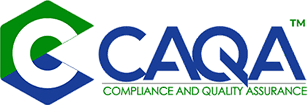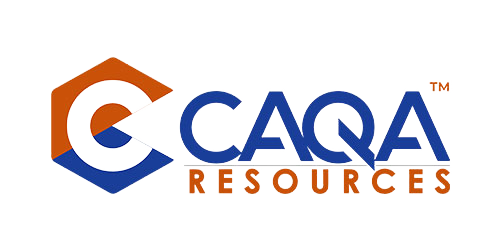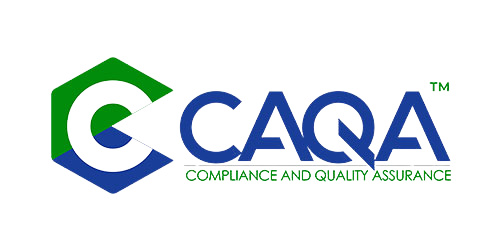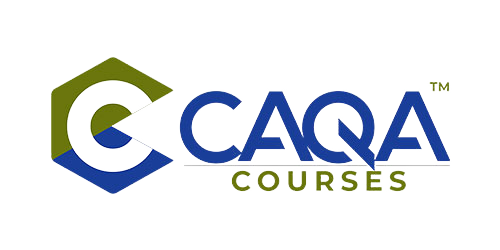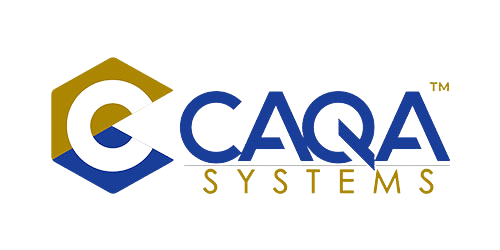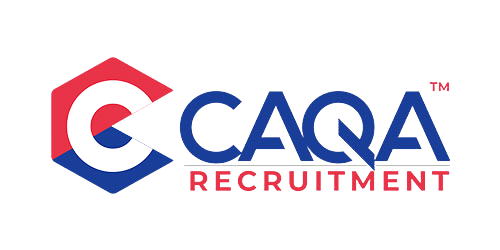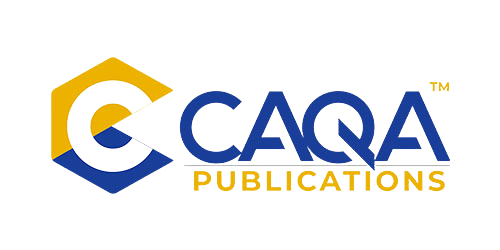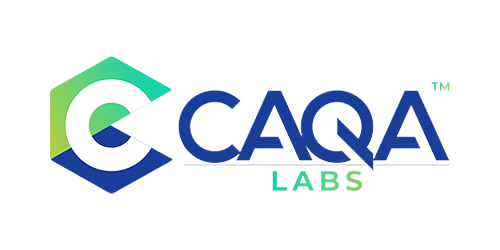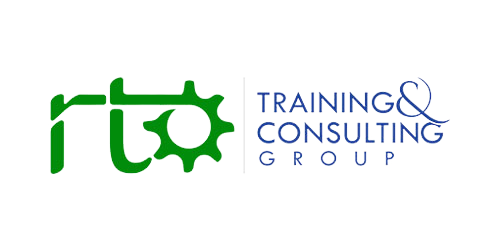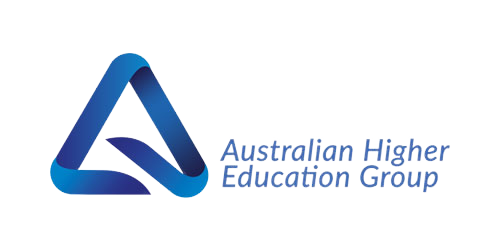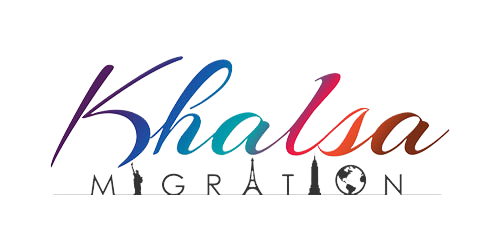It’s time to radically change ASQA — the regulator meant to protect education has become a threat to it
Introduction
Since its establishment, the Australian Skills Quality Authority (ASQA) has been cast as the guardian of standards in the Australian Vocational Education and Training (VET) sector. In theory, it ensures quality, protects students, and drives confidence in credentials. In practice, however, many in the sector argue that ASQA has morphed into a bureaucratic beast more comfortable exercising punitive power than fostering improvement. Instead of supporting Registered Training Organisations (RTOs) to thrive, ASQA often appears to operate from a posture of suspicion, policing technicalities and wielding sanctions with blunt force — frequently to the detriment of otherwise legitimate providers and, more concerningly, the students they serve.
This investigation aims to unearth the full story: the history, the controversies, the voices of providers, the student fallout, the responses from ASQA itself, and lessons from overseas regulators. Ultimately, it argues: yes, radical change is needed. ASQA must adopt a new paradigm — one of partnership, clarity, and fairness — or risk undermining the very sector it was designed to protect.
Origins, Mandate, and Evolution
The birth of ASQA
ASQA was established on 1 July 2011, combining the national regulator’s functions with oversight of non-higher education vocational providers in states and territories (where relevant). Its mandate is to register RTOs, accredit courses, audit compliance with the Standards for Registered Training Organisations (RTOs), and act to protect students (especially from substandard or fraudulent training). It also oversees the VET Financial Assistance (VET FEE-HELP) program (later VET Student Loans) enforcement.
Over time, ASQA’s role expanded—not just in enforcement, but in surveillance, integrity, and risk-based regulation. The regulator adopted powers to suspend, cancel, and audit providers (including unannounced audits), and manage compliance frameworks. Its scope encompasses not just training delivery, but assessment, marketing, student support, third-party arrangements, and more.
Milestones and escalation
In its early years, ASQA was cautious, focusing on consolidating regulatory coverage, building capacity, and establishing processes. But by the mid-2010s, sector scandals (notably widespread VET FEE-HELP abuses) increased political and media pressure for stricter oversight. ASQA responded by tightening thresholds, increasing audit frequencies, and more aggressively enforcing compliance breaches.
In 2018, the federal government commissioned reviews (including Prof. Valerie Braithwaite’s review of regulation and a later “Joyce review” of VET funding) that recommended a more educative — rather than purely punitive — regulatory shift. In 2019, the government demanded ASQA be more transparent, more consistent, and more supportive, instructing it to adopt a more “partnership” posture with providers. Leadership at ASQA shifted soon after.
But despite this rhetoric, in the 2020s, ASQA’s posture has often reverted to enforcement-first, especially as political and public concern over “dodgy colleges” recurs. Most recently, in 2023–24, ASQA stepped up its deregistration activity and retroactive cancellation of qualifications, triggering fierce backlash from the sector and media alike.
The Pressure from Above: Government, Media, and Public Expectations
Political and media drivers
ASQA acts under the weight of strongly negative political and media pressure whenever private colleges, “dodgy” operators, or invalid qualifications are exposed. Politicians and journalists often demand dramatic action: “shut them down, cancel the qualifications, punish the rorters.” That public appetite for tough regulators constrains ASQA’s flexibility; failure to act decisively invites criticism, accusations of regulatory capture, or negligence.
Media coverage has frequently cast ASQA’s role in dramatic terms: as the “avenger of rogue RTOs.” For instance, in February 2025, ABC News published a major exposé on “fake qualifications and financial fraud in the private college sector,” highlighting that ASQA had cancelled over 26,000 qualifications after deregistering colleges implicated in misconduct. The story framed the regulator as taking sweeping action to protect students. But what fewer stories emphasised was how many innocent students were swept up in those cancellations.
Although ASQA is often celebrated in the media as the “cleaner” of the sector, closer examination suggests its approach sometimes courts collateral damage, reputational risk, and a chilling effect on even well-intentioned providers.
Expectations vs reality
The political narrative is simple: aggressive enforcement = confidence that VET won’t be abused. But the reality is more complicated. Enforcement actions are costly, disruptive, and risky — especially when mistakes or overreach occur. Real sector stakeholders (RTOs, staff, students) experience the tensions and unintended consequences.
Furthermore, media coverage often amplifies the worst cases (fraud, scandal) while overlooking the more systemic strains caused by regulatory overreach: smaller providers struggling with compliance fatigue, good providers being penalised over technicalities, and students losing faith in the VET system. The result: a skewed public debate that sees the regulator as a hero when punishments are handed out, but rarely questions whether the regime itself might be overbearing.
Voices from the Field: Critiques, Complaints, and Case Studies
Reputable RTOs under fire
One of the most consistent critiques of ASQA from training organisations is that good-faith providers are being trapped in a compliance labyrinth designed for policing miscreants. These providers often invest heavily in compliance personnel and legal advisors just to keep pace, leaving fewer resources for actual teaching, development, innovation or student support.
Many report that audit experiences depend heavily on which auditor shows up — different auditors interpret the same rule in vastly different ways, leading to confusing or contradictory directions. Some examples:
-
One RTO was told by an auditor that student assessment responses must exactly match the wording in the textbook, a demand that stifles any critical thinking or variation.
-
Another provider applied for course accreditation and found that each communication from ASQA introduced new, often conflicting, requirements—“the goalposts kept shifting.”
-
Some RTOs report that the same policy on a subject (e.g. assessment validation) was flagged in one audit, then cleared in another, leaving them unsure which approach is acceptable and which is at risk.
The cumulative effect is “regulatory whiplash” — constant repositioning, self-doubt, and defensive compliance rather than innovation.
The AAT pushback
ASQA’s enforcement decisions have met resistance in the Administrative Appeals Tribunal (AAT). In many cases, ASQA’s decisions to suspend or cancel registration, or to cancel qualifications, have been overturned on appeal, raising concerns that the regulator oversteps legal bounds with insufficient justification.
One frequently cited case involved a former early childhood educator whose qualifications were cancelled after his RTO was deregistered. He was asked to somehow re-create assignment files from years ago, or hire a lawyer to enforce them, or lose his credentials entirely. The AAT stepped in, granting a stay on the cancellation—effectively signalling that ASQA’s default cancellation posture was excessive and required more nuance.
(See CAQA’s compilation of this case in “When Regulation Goes Too Far.”)
A 2019 parliamentary speech by MP Andrew Laming described multiple examples where ASQA had levied harsh penalties for trivial or technical breaches, including suspending RTOs for months based on logo colour discrepancies, minor wording changes, or campus proximity to public transport. He described an Indigenous community-run RTO that was closed down and charged $22,000 for being audited once. Laming argued ASQA’s approach had become excessive, inconsistent, and destructive.
That so many ASQA decisions fail in the AAT suggests a pattern: the regulator sometimes acts first and justifies later. If a regulator cannot routinely defend its decisions in independent review, one must question whether it is overreaching or whether its internal decision-making is inadequately rigorous.
Student stories and human impact
Beyond providers, students are among the most vulnerable in this ecosystem. When qualifications are cancelled retrospectively, or institutions are deregistered mid-term, students lose not only credentials but reputations, career paths, and financial investment.
One heart-wrenching case: a student who completed a diploma at an RTO later shuttered by ASQA was told his diploma was no longer valid. He was pressured to reassemble assignment files from years ago or sue a defunct institution — a practically impossible task. In the interim, his job prospects were hollowed out. The AAT later intervened, granting him a temporary stay, but only after the damage had well and truly been done.
These stories underscore a harsh truth: for many students, especially those from disadvantaged backgrounds or regional communities, the government’s “protector” regulator has, in some cases, become their adversary. For them, regulation isn’t abstract — it’s a sudden obstacle placed in front of hard-earned progress.
Tightening the Reins: Trends, Reforms, and Structural Shifts
Surge in deregistrations
In recent years, ASQA has amplified its deregistration activity. In 2023–24 alone, it deregistered 51 private colleges — a 34% increase over the prior year. In the last half of 2024, another 28 providers were deregistered. The justification: cleaning up “shonky colleges” and cutting fraud.
But with that surge come questions: Has the regulator paused to examine whether some closures stem from minor technical non-compliance rather than systemic failure? Are all providers subject to the same level of scrutiny, or does size or profile influence the rigour?
Retroactive cancellation of qualifications
Beginning in late 2024, ASQA began cancelling qualifications issued by deregistered providers, retroactively invalidating certificates and diplomas awarded to thousands of students. Over 26,000 qualifications have reportedly been cancelled in a matter of months following mass deregistrations.
This move marks a fundamental shift: not just deregistering the provider going forward, but reaching back in time to erase credentials. While intended as a forceful deterrent and protective measure, it poses serious challenges of fairness and legal risk. Students are suddenly left without recourse — or with only limited, costly appeals. The move has fuelled litigation, backlash and harsh criticism from the sector.
Integrity unit, raids, and tip-off lines
To extend its reach, ASQA has established an integrity unit and launched a tip-off line, which reportedly triggered over 113 unannounced provider audits by late 2024.
These powers push the regulator’s posture further into a law-enforcement model than an educative or collaborative one. Raids, tip-offs, and surprise inspections are tools more associated with policing than partnership. While undeniably useful tools in rooting out serious fraud, their prophylactic or mass deployment carries high risk — especially in a sector as diverse as VET.
Shift toward self-assurance frameworks.
One of the more promising reform ideas emerging in recent years is a movement toward self-assurance models. Under this model, RTOs are expected to internalise compliance and quality assurance in day-to-day operations, with the regulator stepping in only when risk indicators appear. This would reduce the frequency of intrusive audits, shift the compliance burden inward, and lean on trust. ASQA has begun discussing such a shift in consultation documents and internal strategy papers.
However, for self-assurance to work, the regulator must relinquish some micromanagement, provide strong guidance, support provider capability, and accept that occasional lapses may be inevitable in a complex environment — provided they are addressed. So far, the tension is clear: ASQA seems more comfortable reverting to enforcement interventions when under pressure, undermining the credibility of a self-assurance model.
Revision of the RTO Standards
ASQA has long acknowledged that the Standards for Registered Training Organisations (RTOs) 2015 include ambiguous or subjective language, contributing to inconsistent interpretation. In preparation for a revision of the Standards (expected in 2025), ASQA has proposed draft updates. Some in the sector worry the new drafts introduce even more subjectivity or vague qualifiers, compounding uncertainty rather than resolving it.
Critics fear that the new Standards may become a more dangerous shell: more leeway for auditors to wander, more room for disputes, and more possibility that otherwise compliant RTOs will fall victim to minor disagreements with auditors rather than substantive failings. Without stronger guidance and calibration, the new Standards risk codifying the very arbitrariness many providers currently complain about.
International Comparisons: Lessons from NZ, UK and Beyond
New Zealand – NZQA
In New Zealand, the New Zealand Qualifications Authority (NZQA) oversees vocational and higher-level education. NZQA has often been cited as more collaborative and less adversarial in tone, though by no means free of criticism.
NZQA’s approach emphasises external evaluation and review (EER) of institutions, combined with self-assessment cycles and regular moderation. It tends to engage in continuous dialogue with providers, publish clearer expectations, and provide more robust guidance. NZQA audits generally involve cooperative review of systems rather than unannounced punitive raids. When non-compliance is identified, NZQA is more likely to work with the provider on remediation rather than trigger immediate closure (unless wrongdoing is blatant).
Stakeholders often praise NZQA’s balance: maintaining rigorous quality assurance while preserving a reasonable degree of trust and flexibility. Critics point out that NZQA has sometimes been slow to act or too lenient where risks are real — but its model offers more room for relationship-building and shared problem-solving.
For Australia’s VET sector, the key takeaway is that high standards and firm oversight do not require constant heavy-handed enforcement. Regulators can be firm but predictable, supportive but vigilant.
United Kingdom – Ofqual and Ofsted comparison
In the United Kingdom, vocational and general qualification regulation is overseen in part by Ofqual (Office of Qualifications and Examinations Regulation) and inspection by Ofsted for skills providers. Ofqual sets conditions and standards for awarding bodies; it doesn’t regulate all delivery providers directly (which distinguishes it from ASQA). In skills and apprenticeships, the Education & Skills Funding Agency (ESFA) and Ofsted usually take inspection and compliance roles.
Ofsted and ESFA inspections tend to follow inspection frameworks, with providers given warning, feedback, opportunities to correct, and public reporting of results. They tend to avoid surprise punitive closures unless serious safeguarding or fraud issues arise. The expectation is that providers understand the rules, but also receive notice, opportunity to rectify, and transparent reporting.
While the UK regime is not perfect, its regulatory style tends toward structured inspection cycles rather than arbitrary policing. Failings are publicly reported, but closure is a last resort. Providers are rated, and poor ratings have implications, but remedies typically include improvement plans, probation periods, and staged intervention — not immediate shutdown. This offers a contrast to ASQA’s approach, where suspension or cancellation sometimes comes swiftly, even mid-cycle, and compliance is less negotiated.
Ofqual’s framework also emphasises regulatory certainty, proportionate intervention, and continuous stakeholder engagement. These elements are instructive for ASQA’s reform.
ASQA’s Defence: Responses, Reforms, and Public Statements
ASQA’s position
ASQA argues that the VET sector has been deeply abused by unscrupulous operators and that strong regulatory action is necessary to preserve trust. The regulator sees itself as the barrier between students and fraud. From ASQA’s perspective, providers that fail to meet basic standards expose students to invalid credentials, poor training, and floundering career prospects.
On the criticism of overreach, ASQA states it operates under clearly legislated powers, and when deregistering or cancelling qualifications, it follows due process. Where appeals or review overturn its decisions, ASQA claims to accept those outcomes and learn from them — though critics say those learning loops are slow or shallow. ASQA maintains that it has published guidance (practice guides, compliance toolkits, checklists) and that it is working toward greater transparency and consistency.
When accused of being “not a consultant,” ASQA’s rationale is that its role is to enforce, not coach. There is a view that providing too much advisory service risks regulatory capture or blurred boundaries. In its defence, ASQA frequently cites the need to maintain impartiality and resist letting providers “shop for auditors” or game the system.
ASQA also highlights its shift toward risk-based regulation: not every RTO is audited equally; risk profiles drive frequency and attention. In that sense, ASQA argues it is trying to balance burden and oversight. The establishment of the integrity unit, tip-off lines, and unannounced audits is presented as necessary to catch hidden bad actors.
Reforms and changes adopted
ASQA has taken some steps to soften its stance and provide more guidance. It has published Practice Guides aligned to the standards, released self-assessment checklists, and rolled out spotlights on compliance themes (e.g. assessment, third parties) to clarify expectations. ASQA’s website now includes easier access to compliance resources and annotated guidance.
In internal culture, ASQA leadership claims to be pivoting toward a more collaborative approach, with more consultation with industry stakeholders. The regulator has publicly committed to educative regulation, rather than enforcement-first, in response to recommendations from governmental reviews in 2018–2019. Leadership reshuffles (including the exit of a chief commissioner in 2019) were partially justified by a desire to realign the regulatory philosophy.
Yet many in the sector feel these reforms are incremental, underfunded, or overridden when political pressure intensifies. The enforcement reflex often reengages during periods of scandal, suggesting that the old culture remains deeply embedded.
Diagnosing the Problem: Why ASQA Overstepped, and How
Regulatory tension: deterrence vs support
Regulators naturally oscillate between two roles: deterrence (punishing misbehaviour) and support (helping compliance). In sectors with high risk (like financial services, food safety, and health), deterrence is crucial. Yet effective regulation also offers clarity, guidance, and predictable enforcement so that regulated entities can comply easily.
ASQA’s problem is that it has leaned overwhelmingly toward deterrence. In doing so, it eroded trust, pushed providers into protective postures, and made compliance risk-dominant rather than quality-dominant. Many RTOs now invest more in compliance assurance than in improving pedagogy, student support, or curriculum innovation.
Structural problems: ambiguity, capacity, consistency
At the root of many complaints is ambiguity in the Standards themselves. Subjective language, qualifiers like “adequate,” “sufficient,” “appropriate,” or “effective” leave room for auditor interpretation. Without strong, binding guidance, this invites inconsistent application.
Moreover, ASQA’s internal capacity and training for its auditors — and the oversight mechanisms to moderate auditor decisions — appear weak. When auditors have wide discretion, uneven calibration, or weak accountability, variance and overreach become inevitable. If decision reviews or moderation are inadequate, mistakes get baked into enforcement actions.
Another structural tension is full cost recovery. ASQA operates on a cost-recovery basis: providers pay registration and audit fees that fund ASQA’s operations. This model can create perverse incentives: the more regulatory activity, audits and sanctions, the more revenue flows. Critics say this may encourage overzealous enforcement when the regulator is “hungry for work.” The risk of regulatory overreach becomes magnified when enforcement is financially incentivised.
Legacy of VET scandals
ASQA’s hard line is in part a reaction to earlier VET sector catastrophes — notably the VET FEE-HELP debacle, where unscrupulous providers exploited student loans, leaving students saddled with debt and valueless qualifications. That history instilled in government and the public a distrust of the sector, generating political pressure for a tough regulator.
ASQA’s aggressive posture is thus partly defensive: regulators now operate in a climate of suspicion. However, punishing the current cohort heavily to deter future bad actors is a blunt strategy, and risks driving out high-quality smaller providers who cannot absorb the compliance load.
Imbalance of power and lack of genuine feedback loops
The sector often complains of a lack of meaningful agency input. Although ASQA conducts consultations, many say those are perfunctory or too late. Provider feedback on audit experiences rarely leads to systemic correction. When decisions are overturned by the AAT, scant public reflection or apology is seen. The regulator rarely publicly admits mistakes or revises a punitive decision based on stakeholder input. This top-down approach discourages trust or open communication, incentivising silence or defensiveness among RTOs rather than candid improvement.
What Should Be Happening: A New Model for ASQA
Shift from cop to coach.
ASQA should reposition itself as a partner in quality, not a censor. Auditors should act as mentors in compliance, offering feedback, clarifications, and remediation pathways before leaping to sanctions. Rather than punishing first, the regulator should aim to prevent non-compliance through advice, capacity building, and clarity.
Proportionate, staged enforcement
Severe penalties like suspension, deregistration, or qualification cancellation should be reserved for providers who repeatedly fail or refuse to improve despite guidance. For less serious or isolated breaches, warnings, conditional regulatory undertakings, remediation plans, or coaching should come first. Sanctions should be a last resort. Where enforcement is needed, it should be proportionate, transparent, and subject to internal moderation and external review.
Clear, consistent, public guidance
ASQA must publish definitive guidance, model policies, templates, and interpretive commentary. If a clause in a Standard is going to be enforced in a certain way, that interpretation should be publicly available, so all providers know how compliance will be judged. If multiple auditors have diverging views, ASQA must resolve and reconcile them openly. Sector workshops, case studies, clarifications and Q&A forums should be routine.
Internal calibration and quality assurance of audit decisions
ASQA should invest in stronger internal audit moderation, peer review, and calibration exercises to ensure auditors apply the Standards consistently. Auditor performance should be monitored and benchmarked. Discrepancies should trigger internal review, retraining or adjustment. If a decision is subsequently overturned in appeal or review, ASQA should publicly document lessons learned and adjust processes.
Move fully toward self-assurance.
The direction toward self-assurance (where RTOs manage compliance internally and ASQA acts in oversight mode) should be accelerated. Under this model, ASQA conducts risk-based checks, not full audits of every provider. Providers with good track records could expect fewer intrusive audits, while new or riskier ones receive more scrutiny. This reduces regulator burden, fosters trust, and encourages providers to embed quality into everyday operations.
Student protections and transitional fairness
Any regulatory transition must include protections for students. In cases where providers are deregistered, students should be given options: transfer to other providers, completion pathways, or independent competence assessment rather than blanket cancellation of their qualifications. Retroactive cancellations should be extremely rare, with grandfathering or validation mechanisms to reduce harm. ASQA should urgently examine remedy frameworks that preserve student rights.
Leadership change, culture reset, and stakeholder partnership
Real change requires new leadership and a new ethos. ASQA leadership must embrace humility, transparency, and servant regulation. Its culture should encourage listening, admitting error, continuous improvement, and working with providers—not dictating to them. Frequent and genuine stakeholder engagement (with RTOs, sector associations, student bodies) must be institutionalised, not tokenistic.
Risks & Challenges in Reform
-
Political pressure in crises: When a scandal strikes, the political demand for visible action may pull ASQA back toward enforcement extremes. The regulator must guard against reverting to “shock and awe” tactics.
-
Balancing trust and risk: Giving providers more leeway raises the risk of misconduct slipping through. A self-assurance model requires sophisticated risk analytics, monitoring, and a willingness to intervene early.
-
Legal and statutory constraints: ASQA’s legislative powers are fixed; any reform may require amendments to the National Vocational Education and Training Regulator Act 2011 or associated instruments.
-
Cultural inertia: Internal mindsets, auditor habits, and entrenched practices within ASQA may resist change. Reform needs sustained leadership and accountability.
-
Capacity and resourcing: Transitioning to a more educative regulatory model is resource-intensive: guidance, consultations, training, moderation, and stakeholder engagement all require investment. Without adequate funding and staffing, reforms may be superficial.
Time for a New Regulatory Dawn
ASQA, as it stands, is overreaching, unpredictable, and sometimes unjust — a regulator with too much power and too little humility. Its zeal to protect the VET system has led it to adopt a posture of punishment over partnership, one-size-fits-all enforcement over measured support, and rigid ideology over practical clarity. The casualties aren’t just substandard colleges — they are legitimate RTOs pushed to the brink, and students whose hard-earned credentials are annulled or undermined.
Yet the path ahead is visible. We do not need to gut regulation; we need better regulation. A system grounded in clarity, consistency, fairness, partnership, and proportionate enforcement can simultaneously protect students and foster high-performing providers. ASQA’s monopoly over regulation carries enormous responsibility: it must use that power to uplift the sector, not punish it blindly.
This is not imaginary idealism — many regulatory regimes around the world (NZQA, Ofqual, national education regulators) show that firm oversight and sector trust can coexist. Australia’s VET sector deserves no less. The changes needed are bold and systemic: new leadership, new culture, new approach. If ASQA cannot evolve, it risks dragging the sector into decline.
As a senior editor and investigative officer in CAQA, I see the fallout first-hand: providers closing, students left in limbo, innovation stifled. The evidence is mounting: the regulator has gone too far. The question now is whether policymakers, ASQA itself, and the VET community have the courage to reclaim a regulatory model that protects without punishing — one that strengthens rather than strangles education. The future of Australia’s skilled workforce depends on it.
